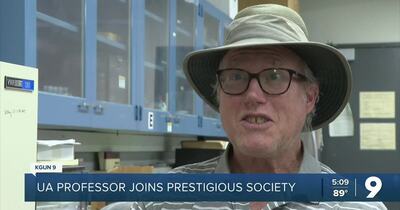
Interesting paper by Chelsea Long on the history of Antarctic ice core research out recently in the Polar Journal. A big effort from Chelsea, bringing together 239 publications to do a bibliometric analysis.
https://www.tandfonline.com/doi/full/10.1080/2154896X.2024.2342112
@michcampbell V cool. Thanks for sharing!
V v glad to see Prof. Jay Quade—a most wonderful colleague and someone I am lucky to call my mentor—be inducted into the National Academy of Sciences.
Interesting {{preliminary}} data of low CO₂ values during the Pliocene and across the MPT
Oldest ever (blue) ice offers glimpse of Earth before the ice ages https://www.science.org/content/article/oldest-ever-ice-offers-glimpse-earth-ice-ages
I've been along for the ride with @viticci for more than half those years now, which is hard to believe.
We've accomplished a lot, but I feel like we're just getting started in the best way possible too. It's an exciting time to be building things on the web.
https://mastodon.macstories.net/@viticci/112304711506286209
We have a new #article out in #JGR #Atmospheres focusing on the tropical Pacific – Asian Monsoon relationship (and how it varies) across the last millennium using #paleoclimate data assimilation products: https://agupubs.onlinelibrary.wiley.com/doi/10.1029/2023JD039207
A new article in #EOS by #AGU staff & myself on some best practices for peer-reviews: https://eos.org/editors-vox/the-dos-and-donts-of-peer-reviewing
#PeerReview #AcademicChatter #AskAcademia #AmericanGeophysicalUnion #AGU23
Outside of Greenland and Antarctica, very few land areas were even close to average during the NH summer. You can also see the developing El Nino. Plot from: https://data.giss.nasa.gov/gistemp/maps/
In 1979, Jules Charney (and team) produced
"Carbon Dioxide and Climate: A Scientific Assessment”
They examined two models. Manabe's GFDL model and, wouldn't you know, the not-yet-even-described GISS Climate model by Jim Hansen and others. (We call it ‘Model I’ because we're inventive.)
They concluded
"taking into consideration all the above direct effects and feedbacks, we estimate ... 𝚫T for doubled CO2 to lie in the range of 1.6 to 4.5 K”
Again-- things haven't changed so much…
15/many
Next week, #NASA Goddard Institute for Space Studies turns 60, and we are celebrating our anniversary with some retrospective talks on our history… and forward thinking talks about our future.
I have been appointed to present “History and Future of #Climate Modeling”, so I’ve been interviewing many GISS alumni.
The back-stories to the published development are fascinating.
I’ve asked my boss to get a film maker to document these oral histories better. It would make a great documentary imho.
accepted version of new paper available today in Global Biogeochemical Cycles: Magnitude, trends, and variability of the global ocean carbon sink from 1985-2018
This contribution to the RECCAP2 (REgional Carbon Cycle Assessment and Processes) assessment analyzes the processes that determine the global ocean carbon sink, and its trends and variability over the period 1985-2018, using a combination of models and observation-based products. Key points:
The RECCAP2 global ocean analysis provides an authoritative multi-model and observation-based assessment of global ocean CO2 uptake
pCO2-based products yield a mean sea-air CO2 flux from 1985-2018 of -1.6±0.2 PgC yr-1 with a trend of -0.61 PgC yr-1 decade-1 since 2001
Ocean anthropogenic CO2 uptake averages -2.1-2.4 PgC yr-1 from 1985-2018, with a trend of -0.34-0.41 PgC yr-1 decade-1 since 2001
#ocean #carbon #ClimateChange #co2 #agu #biogeochemistry
https://agupubs.onlinelibrary.wiley.com/doi/abs/10.1029/2023GB007780
In case you don’t believe the same equations govern #motion in the #atmosphere and the #ocean.
Video by Tristan Heth in Tenerife, Canary Islands, Spain.
@bee8bit Ah! So it has to do with the fact that the subsurface-dwelling planktic foraminifera are living in "older", deeper waters (~500 m), as opposed to the others which are living in upper waters at the surface (0-50 m). While making shells, the surface bugs readily equilibrate with atmospheric radiocarbon (and hence gives accurate dates). The scientists are looking at dating sediment cores taken from the bottom of the ocean, which contain shells deposited from above; but plankton that lived in 0-50 m and >300 m (and even those living at the ocean bottom), all "co-occur" in the sediments (or mud/clay) that is brought in by rivers or wind. This is why its important to only date shells of surface-ocean species of plankton from marine sediment cores as opposed to the deeper-dwelling ones (w nice experiment borne out in that article).
If two types of plankton were living in the same waters, their source of carbon is the same, and hence their shells will not give different ages.
Sorry to be long, but hopefully simple!
A nice, new #study out by Jörg Lippold & colleagues on #radiocarbon differences in co-occurring planktic #foraminifera. They document how subsurface-dwellers like G. truncatulinoides have ages offset, on average, by ~300 14-C yrs compared to surface-ocean species (like G. ruber & T. sacculifer).
- https://www.instagram.com/holy_kau
- Paleo² Lab
- https://thirumalai.geo.arizona.edu
Earth/climate scientist in the southwest US.















